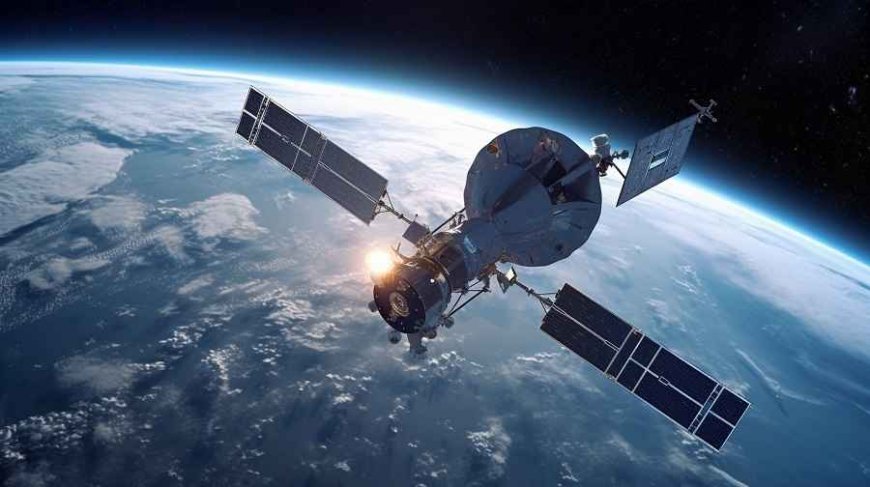The Future of 5G Sky High Connectivity via Space Satellites
In the year 1957, humanity celebrated a milestone as Sputnik became the first artificial satellite to grace our skies. Since that historic moment

In the year 1957, humanity celebrated a milestone as Sputnik became the first artificial satellite to grace our skies. Since that historic moment, our celestial realm has been adorned with numerous technological marvels. These satellites not only provide us with invaluable data and images of Earth but also enable long-distance communication and perform a multitude of tasks that enhance our daily lives on terra firma. What's even more exciting is that the next generation of satellites, compact, efficient, and cost-effective, is poised to usher in the era of space 5G.
Traditionally, launching a satellite into orbit has been a costly endeavor, usually requiring substantial government investments coupled with advanced knowledge and technology. However, this landscape has been undergoing a transformation in recent years. New satellites are taking their place in the Earth's orbit at a lower cost, covering shorter distances, while delivering performance similar to their larger predecessors.
The advent of more affordable satellites heralds the potential to establish a network of space-based antennas that complement existing ground-based infrastructure, thereby bolstering the burgeoning 5G networks. As the demand for 5G bandwidth continues to soar, space 5G promises to expedite network expansion, prevent congestion, and extend coverage to every nook and cranny of our planet.
Meet the Low Earth Orbit (LEO) satellites.
The new stars of the satellite world. Unlike their predecessors, the Geostationary Orbit (GEO) satellites, which have been orbiting for over half a century and weigh more than a ton, LEO satellites are compact, weighing less than 500 kilograms, and operate at distances ranging from 500 to 2,000 kilometers from Earth's surface. Their proximity results in reduced latency, making data transmission faster. Moreover, they are cost-effective. The only trade-off is their relatively smaller coverage area, a challenge that can be overcome by deploying more satellites.
The reduced cost and enhanced capabilities of LEO satellites have made them an attractive option for private sector innovation. Companies worldwide are exploring this technology to establish satellite networks for diverse purposes. Notable among these endeavors is SpaceX's Starlink project, which aims to provide global Internet access through an extensive satellite network. SpaceX is not alone in this burgeoning sector; other competitors are entering the private space race.
Space 5G is set to bridge the gap between smart cities and interconnected devices. As we move toward deploying 6G and 7G networks, a world where millions of devices communicate with each other is fast becoming a reality. This interconnectedness necessitates ultra-fast, low-latency networks, which are essential to the success of 5G technology. While 5G coverage is already a reality in many countries, we have not yet tapped into its full potential for delivering optimal speeds.
In the future, as we endeavor to connect roads, lighting, and various public services, land-based 5G technology will be complemented by space 5G, powered by low orbit satellites. This synergy will alleviate network congestion and further reduce latency, benefitting both urban centers and remote regions.
One remarkable advantage of LEO satellites is their ability to provide connectivity to remote or isolated areas on land and in the vast ocean expanse. This encompasses ships, aircraft, and vehicles in far-flung locales, delivering cost-effective connectivity that surpasses what could be achieved with fiber optics or terrestrial antennas.
SpaceX, with over 4,500 satellites, is a prominent player in the low Earth orbit satellite arena, with approximately 2,000 already operational. These satellites offer internet access at speeds nearing 100 Mbps per user. Amazon's Kuiper project, with 3,236 planned satellites to be in orbit by 2026, is another strong contender. OneWeb, with 648 satellites, including 428 in orbit, aims to collaborate with various telecommunications operators. Additionally, Telesat's Lightspeed initiative is set to launch 298 satellites between this year and 2023, and Inmarsat's Orchestra plans to deploy 175 LEO satellites to facilitate 5G connectivity in conjunction with GEO-type satellites.
The sky is no longer the limit; it's the launching pad for unprecedented connectivity. With space 5G, we are poised to break the boundaries of terrestrial communication, bringing the world together like never before.
